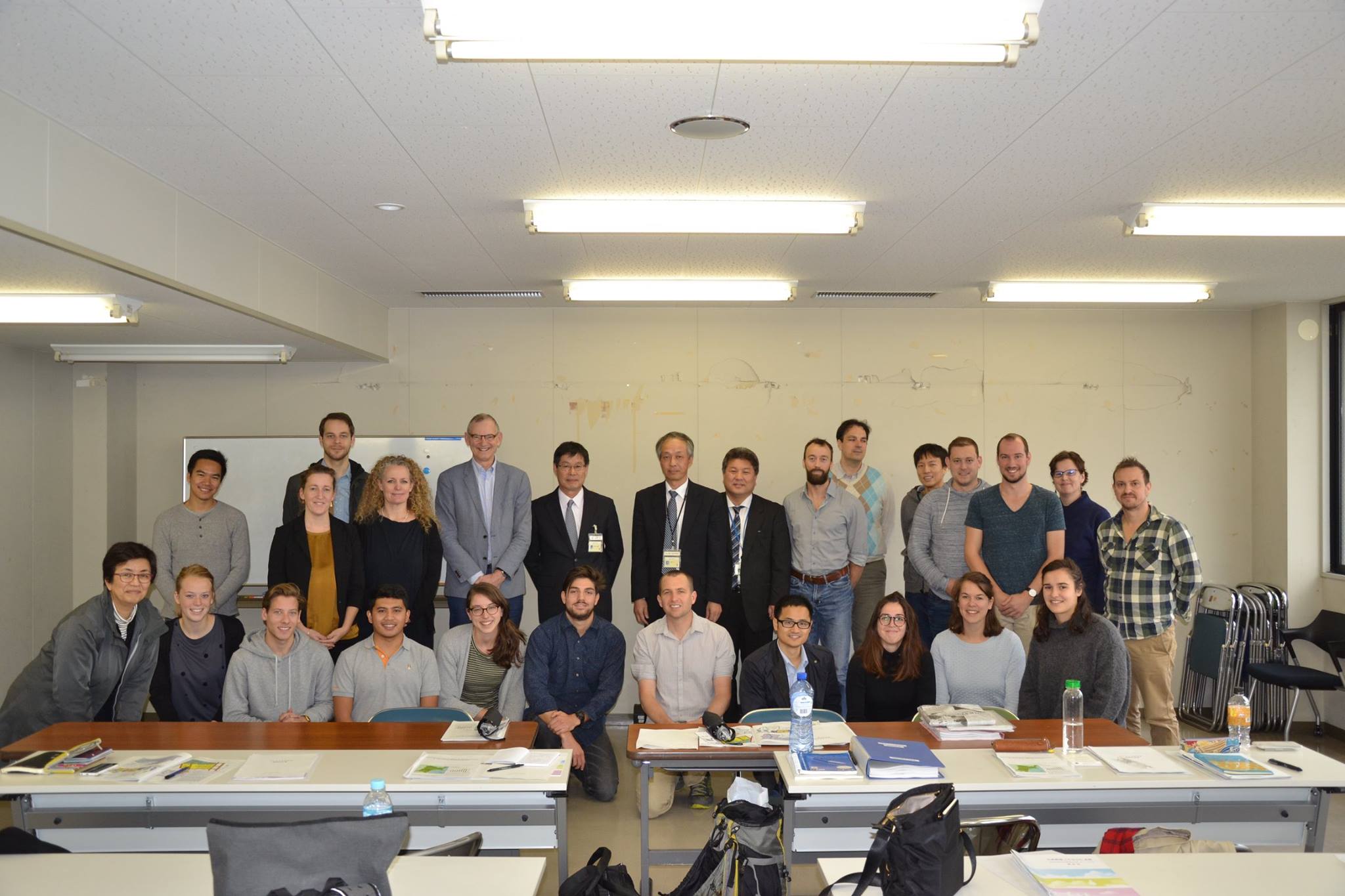Short essay Japan Trip
Like the Netherlands and Japan, nations that share a centuries-long history of exchange, various departments at TU Delft’s Civil Engineering and Architecture-faculties of the TU Delft likewise share warm relations with Japanese academics. The Interdisciplinary-International RESEARCH TSUNAMI RECONSTRUCTION-project allowed staff and students of five disciplines to study and reflect on the reconstruction after the Great Eastern Japan Earthquake and Tsunami of March, 2011. As the workshop also pursued insight in advanced interdisciplinary collaboration, the project has been funded by the Delft Deltas, Infrastructures & Mobility Initiative (DIMI).
The workshop was held in Sendai, 450 km north of Tokyo, at Tohoku University in the International Research Institute of Disaster Science (IRIDeS). Quite uniquely, the workshop brought together faculty members and students from 2 faculties and 5 different disciplines: Transport Infrastructure and Logistics (TIL), Water Management, Hydraulic engineering, Urbanism and Geotechnical engineering.
The main study area was Yuriage, a village part of Natori city, 5 kilometers downstream of Sendai at the coast of the Pacific Ocean. In the reconstruction of Japan’s northeastern coast, Yuriage represents a unique example. While the majority of the settlements flushed away during the 2011 Tsunami will not be reconstructed close to the coast, Yuriage will in fact resettle in the original geographical location. To do so, the area relies on a major geotechnical and building-site preparation techniques. Next to a sea wall, the first line of defense, a land-raising strategy of 5 meters (taken from the mountains in the inland) is pursued. Additionally, new apartment blocks are constructed to accommodate vertical evacuation.
In the workshop, the students went through a five-step process, that took them from a single-disciplinary analysis with a proposed scope of solutions in the first step, to knowledge integration with two, three, four and finally five diciplines (the so-called charrette approach). In the two remaining multidisciplinary groups, the participants brought their analysis of Yuriage to a shared, interdisciplinary, understanding of how alternative interventions, proposed by a certain discipline, affects other possible interventions.
At the end of the multiple-day workshop, a vision and preliminary design proposal, and an integrated design and engineering strategy for the redeployment of essential services and infrastructures in Yuriage was presented. The methodology, which required participants to offer a set of interventions on a scale from extreme engineering proposals and nature-based alternatives, permitted different levels of interactions between the disciplines. Thus, alternatives were weighed, and balanced, in an integral strategy for urban and landscape (re)development.
Researcher Filippo LaFleur, working on Special Project 2, Subsurface Infrastructure for Surface quality, in which ‘the Japanese approach’ is also subject of study, focused together with guest researcher Keisuke Sugano on the analysis of drawings and visualization in the planning documents that were provided by the municipality. Also, DIMI’s postdoc Nikki Brand observed and analysed the methods applied in the workshop, in order to stimulate knowledge integration (‘interdisciplinarity’) between the academic disciplines of spatial planning, spatial design and engineering design.
Preliminary insights based on the workshop are that the Japanese approach to reconstruction in post-disaster area may be one of the advanced globally. It relies heavily on large infrastructures (sea walls), spatial planning measures (strict zoning of vulnerable land uses in tsunami-1 and tsunami-2 areas), building codes (especially to create earthquake-resistant buildings) and evacuation-strategies (horizontal and vertical). On the other hand, based on the example of Yuriage, Japan struggles with the question of how to (re)build attractive settlements for an aging and shrinking population.
The last night, TU Delft’s staff members were welcomed in the Dutch Embassy in Tokyo, where information, insights and future collaboration initiatives on pressing societal challenges were discussed. Beside the fantastic experience on the case study, the real experience was the journey itself. Cities, Landscapes, high speed (shinkansen) trains, stations, food, a little earthquake (4.9 magnitude) conversations and cultural insights all contributed enormously to a real enriching Japanese experience.
Staff involved: Amin Askarinejad (Geotechnics), Jeremy Bricker (Hydraulics), Fransje Hooimeijer (Urbanism), Adam Pel (Transportation) and Frans van de Ven (Water Management)
Students:
Toni Glasbergen and Xenofon Grigoris (Hydraulics); Jesse Dobbelsteen, Nasiem Vafa, Marieke Oosterom and Neil Moncrieff (Urbanism); Mustaqim and Femke van Overstraten Kruijsse (Geotechnics); Marieke van Dijk and Robert Moehring (Transportation); Sven Suijkens and Ainoa Areso (Water Management).
